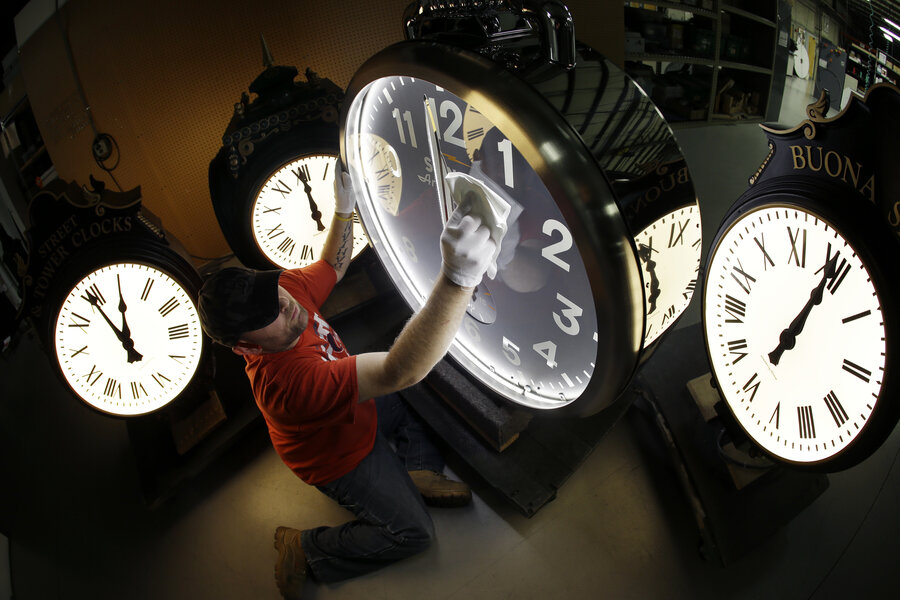Which states want to drop daylight saving time?
Loading...
Of Benjamin Franklin’s brainchildren, daylight saving time is probably the least beloved.
The Founding Father was one of the first proponents of setting back and turning forward one’s clocks, advocating the notion in a 1784 essay, though it wasn’t adopted in the United States for well over another century.
But as a growing body of studies has undercut the notion that the practice is economical or wise, legislators in more than a dozen states have contemplated changes to daylight saving time – whether it’s abolishing it or just staying on it year-round.
“It might seem like a minimal issue, but the data are very clear that there are very noticeable impacts just from a one-hour change,” says Christopher Barnes, an associate professor of management at the University of Washington’s Foster School of Business and a proponent of eliminating DST.
“In the spring,” when clocks get turned forward, Dr. Barnes tells The Christian Science Monitor, “people do sleep less.”
Researchers have linked that lost sleep to spikes in driving and workplace accidents (with fatal car crashes jumping about 6 percent over the six days following the change) as well as decreased productivity and moral awareness about important decisions.
Some state legislators have taken the research to heart. In Alaska, lawmakers have proposed shifting the whole state, which runs on two different time zones, onto Pacific Standard Time, and ending the practice of changing the clocks twice a year. That, as Vox notes, would mean much of the state would essentially be switching to daylight saving time year-round. The same goes for Massachusetts and Rhode Island, where lawmakers have proposed a year-round adoption of the Atlantic time zone, one hour east of Eastern Standard.
But so far, state lawmakers have been loathe to approve the change, fearing it might create confusion that would be bad for commerce.
“The effect on transit alone — forcing Amtrak and airlines to recalibrate schedules and commuters to change time zones whenever they cross the New York state line — could involve many unwelcome costs,” wrote the Associated Press in March.
‘‘For commerce and transportation, it’s a terrible idea,’’ Michael Downing, an English professor at Tufts University who wrote a book on the history of the phenomenon, told the Associated Press.
Similar concerns were at work in California, where an August bill that would’ve created a ballot measure to abolish it – accompanied by another bill asking Congress to allow it, since states can’t back out of daylight saving without federal approval – failed in the state Senate.
One of the merits traditionally cited by proponents of daylight saving is that it helps save energy. A 2008 study by the Department of Energy found annual energy usage declined about 0.03 percent because of the practice – enough to power some 100,000 homes for a year, according to the Harvard Kennedy School’s Shorenstein Center on Media, Politics and Public Policy.
But other studies have put the value of that figure into question: one influential 2011 study found that when Indiana instituted daylight saving across the state in 2006, it actually increased electricity demand by about 1 percent, reported The Christian Science Monitor. And researchers from Yale University and the University of California Santa Barbara say that the savings from reduced lighting in the summer is effectively outweighed by the increase in air conditioning and heating.
Still, Dr. Barnes of the University of Washington argues that the presumed extra difficulties faced by transportation companies and other business because of a move away from daylight savings time is overstated, since many companies already operate over multiple US and global time zones.
“I think the added complexity exists, but it’s pretty negligible, and the benefits you can reap from it are pretty tangible,” he says.






